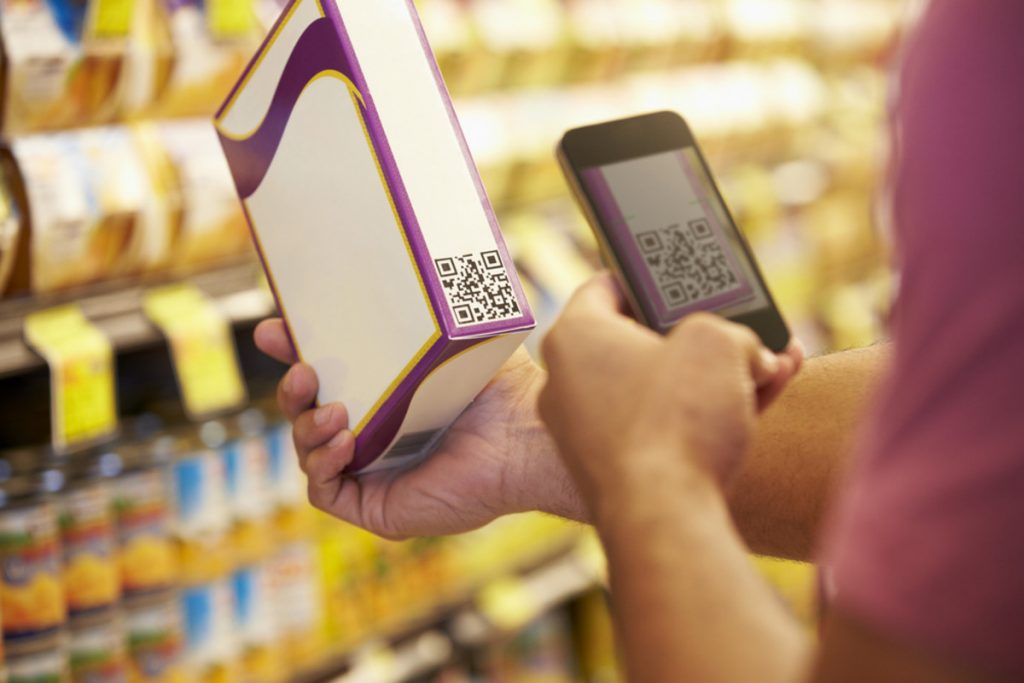QR Codes on Product Packaging
Posted on by Chad DormanWith everything the pandemic has brought in recent years, there has been a spotlight shining brightly on how touch-free solutions and QR Codes are to be a major part of not just our dining or shopping experience, but are fully a part of lives today, tomorrow, and well into the future.
We fully expect see the massive surge of QR code use to continue into the future. This blog is the first of three in a series which will focus on how QR codes will continue to develop and grow in the coming years.

When shopping, product packaging is a crucial aspect of consumer decision-making. In fact, in her article “Why 2021 is the year of QR codes” author Sneh Ratna Choudhary shares with readers that approximately 1/3rd of consumer decision making when shopping is solely based on a product’s packaging. Choudhary further reiterates this point with the realization that QR codes are the answer to the ever-present marketing problem of creating a minimalistic yet aesthetically pleasing design. The author also touches on QR codes being required with GMO products in the U.S.; supplying the consumer with an easy way to learn more about the ingredients within the product.
Today’s consumer is not only concerned about ingredients in GMO products, however. According to a 2020 consumer behavior report published by Deloitte, current and future consumers will most likely be making purchasing decisions based on a newly understood set of parameters, including: nutritional awareness, sustainability, and social responsibility. In his article titled “QR Codes on Food: How QR Code Food Uses Engage Customers”, the author addresses these three purchasing parameters and how QR codes can be effectively implemented with each. Firstly, the author highlights that only about one of every 3 people check the nutritional labels on the packaged food they eat, even though approximately 63% of the population want to eat healthy “most or all of the time”. Scott outlines that providing nutritional information via QR code, something that subsequently isn’t restricted by the space on product packaging, allows manufacturers the ability to add a more detailed set of information that is invaluable to consumers. Scott urges manufacturers to take advantage of the greater flexibility with the QR code, as consumers can be made easily aware of allergy information, social responsibility initiatives, instructions, sustainability certifications, and more with a simple scan. This also opens the door for the possibilities of food traceability. As the author outlines, “a running account of where [a product] originated, was manufactured, and was distributed along with relevant information about those production, manufacturing, and distribution facilities [can all be traced using a QR code]. Scott further emphasizes that QR code traceability can also take into account the present status of products, such as product recalls, updates regarding production facilities/fulfillment centers, and any other relevant information in regards to the product’s present supply chain status.
It is clear that the use of the QR code will continue to grow exponentially, with QR code food labels just one of many versatile uses of the technology.
Choudhary, Sneh Ratna. “Why 2021 Is the Year of QR Codes.” Beaconstac RSS, 24 Dec. 2020, blog.beaconstac.com/2019/02/why-2019-is-the-year-of-qr-codes/.
Scott. “QR Codes on Food: How QR Code Food Uses Engage Customers.” SproutQR, SproutQR, Inc., 1 Sept. 2020, www.sproutqr.com/blog/qr-code-food.

